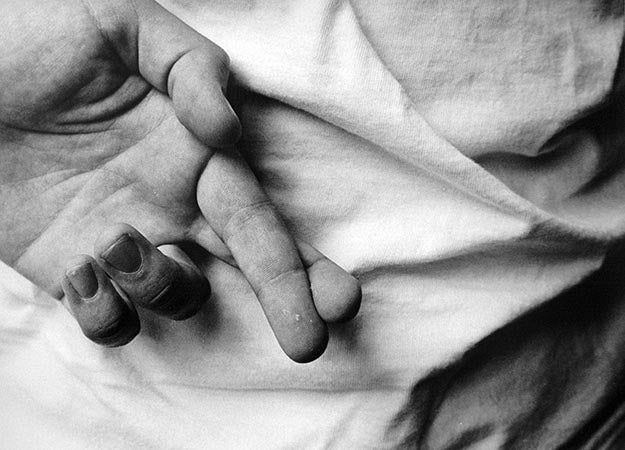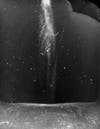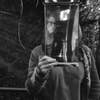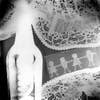Is Darkroom Photography Still Relevant?
Some universities swear that it's a fundamental, while others have killed it altogether







Reports of the death of analog photography have been greatly exaggerated. In the consumer world, film may have been sunk by digital technology, but wet black-and-white darkroom photography is alive and well in academia. “I’ve heard the rumors,” says Tom Shillea, director of art programs at Northampton Community College in Bethlehem, Pennsylvania. “But we still have one of the best-equipped black-and-white darkrooms in the region.”
Ask college photo teachers to name a school that has given up traditional black-and-white, in fact, and you’ll draw plenty of blanks. Most photo programs now offer instruction in digital imaging along with traditional approaches to darkroom photography, of course. And the programs that have abandoned film—including some community colleges and most high schools—have done so not necessarily because of a perceived loss of value in learning things the old-fashioned way, but for utilitarian reasons.
“We were the first community college in North Carolina to go completely digital,” says Blake Madden, who heads the photo program at McDowell Technical in Marion, North Carolina. “We discussed the issue at length, but given that the world of commercial photography was going almost exclusively digital, we thought it was in the best interest of our students.” He points out that he has just two years to prepare his students for possible careers in photography, and that having to teach the mechanics of traditional approaches might impede that.
The other factor in purging film, in North Carolina and elsewhere, has been cost. It’s harder than ever to pay for darkroom photography materials, given the shrinking budgets of publicly funded college systems. Time constraints have also driven analog photography out of associate’s degree-granting programs and professional schools. Hallmark Institute of Photography in Turners Falls, Massachusetts, is one example. Exclusively career-oriented, it offers a 10-month intensive curriculum that would probably be impossible without the immediate visual feedback provided by digital capture and printing. “We train students on what they’re going to find when they enter the working world,” says Lisa Robinson, director of education at Hallmark. “They’re not likely to encounter darkrooms. And in terms of teaching, digital lets students see their results right away, so that the lesson registers more quickly.”
Four-year programs, whether in art schools or liberal arts colleges, are divided in the way analog photography is incorporated into the curriculum. Some regard darkroom photography as a foundation skill—an important way to teach beginning students how the medium really works, unobscured by electronic technology. Digital imaging is offered only later. Other schools view wet black-and-white as a more advanced technique—something to try after a student has learned the basics through digital capture and printmaking. In these programs, the use of film is reserved for students who have made a serious commitment to photography.
Even in programs that start with film, students don’t always stick with it. “We have a couple of darkrooms and teach the fundamentals traditionally,” says Henry Horenstein, who teaches at Rhode Island School of Design and literally wrote the book on the subject. (His bestselling Black-and-White Photography: A Basic Manual has been the beginner’s bible for four decades.) “Students seem to like it that way, but ultimately they choose to go hybrid—shooting film then scanning it for digital printing—or to digital capture. We rarely see traditional black-and-white after a second- or third-level course.”
Maxine Payne, who heads the photography department at Hendrix College in Conway, Arkansas, sees traditional black-and-white as the only true path in a liberal arts setting. She uses it to disabuse new students of the notion that they are already photographers. “What that often means is that they’ve taken pictures with their phones and put them on social media, or gotten them into a high-school yearbook or art show,” she says. “Rarely have they printed those pictures on anything more than a home printer. They also have no sense of failure, because they can shoot as much as they want and just delete what they don’t like—or use an app that corrects and often changes the original image to fit preconceived notions, usually from popular culture, about what makes a good photograph.”
Craig Stevens, a professor of photography at Georgia’s Savannah College of Art and Design, has observed the same phenomenon. “Digital technology is so good that it creates an automatic acceptance of the end product, as is,” he explains. “Using black-and-white film defies that notion. Students must consider exposure, development, and how technical choices combine with aesthetic decisions to affect the final image,” he says. It forces students who have grown up in the fast-and-furious world of digital to slow down.
Grace Oxley, one of Payne’s photography students at Hendrix College, corroborates that view. “Studying film photography has taught me to shoot and print more deliberately,” she says. “I know I only have 36 shots on a roll, so I have to make careful decisions concerning light and composition that I just don’t think about with my digital camera.”
Along with making students think harder about their own photography, Payne believes that the benefit of learning darkroom photography is relevant to other aspects of their academic and personal lives as well. “They learn that an investment of time in anything they do yields greater understanding and appreciation, and ultimately skill,” she says. “It’s a good way to think about their reading, their writing, or their relationships.”
Story originally published in Popular Photography On Campus